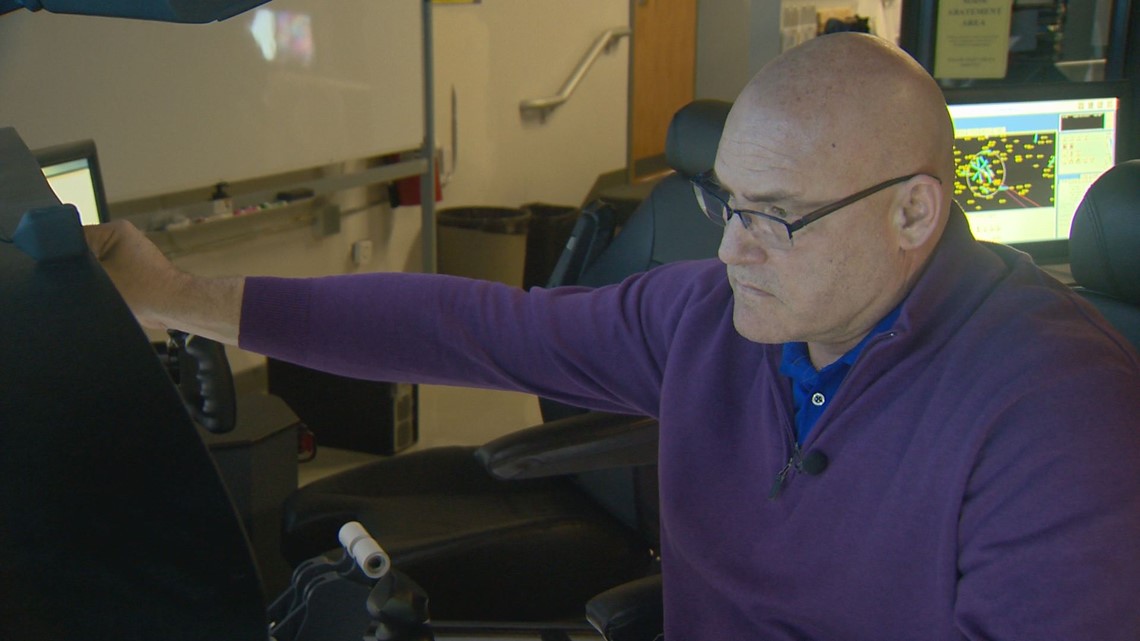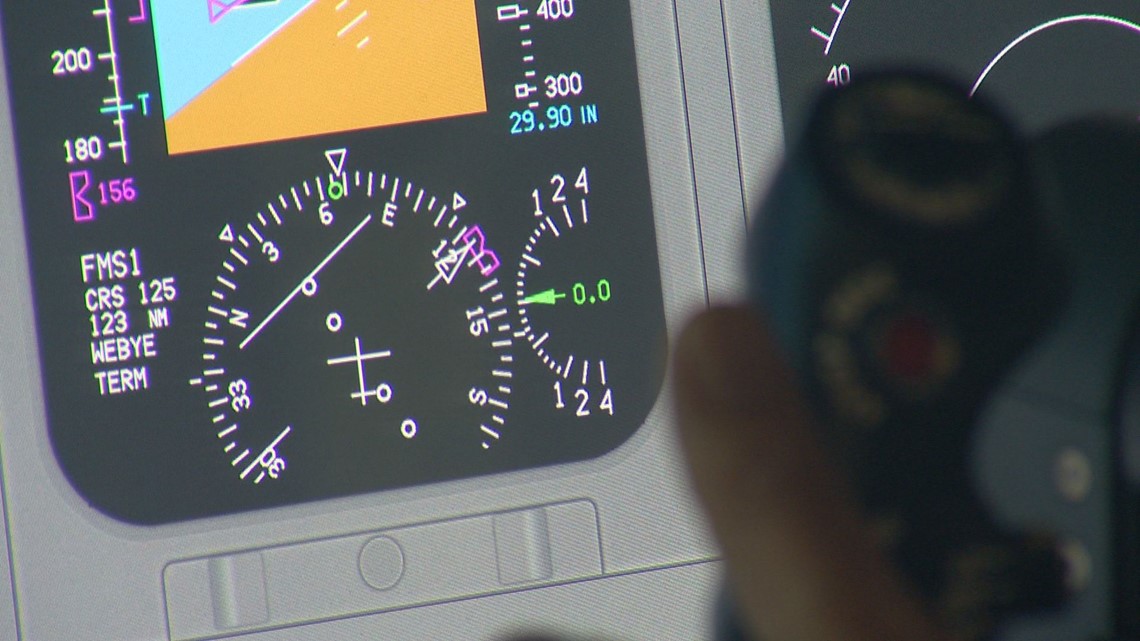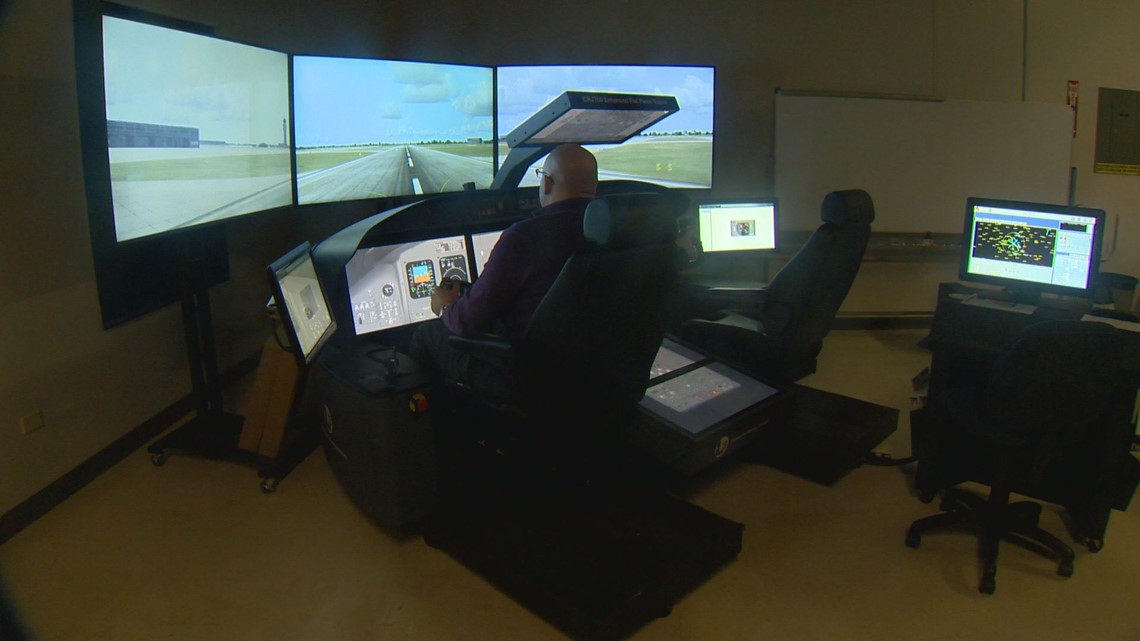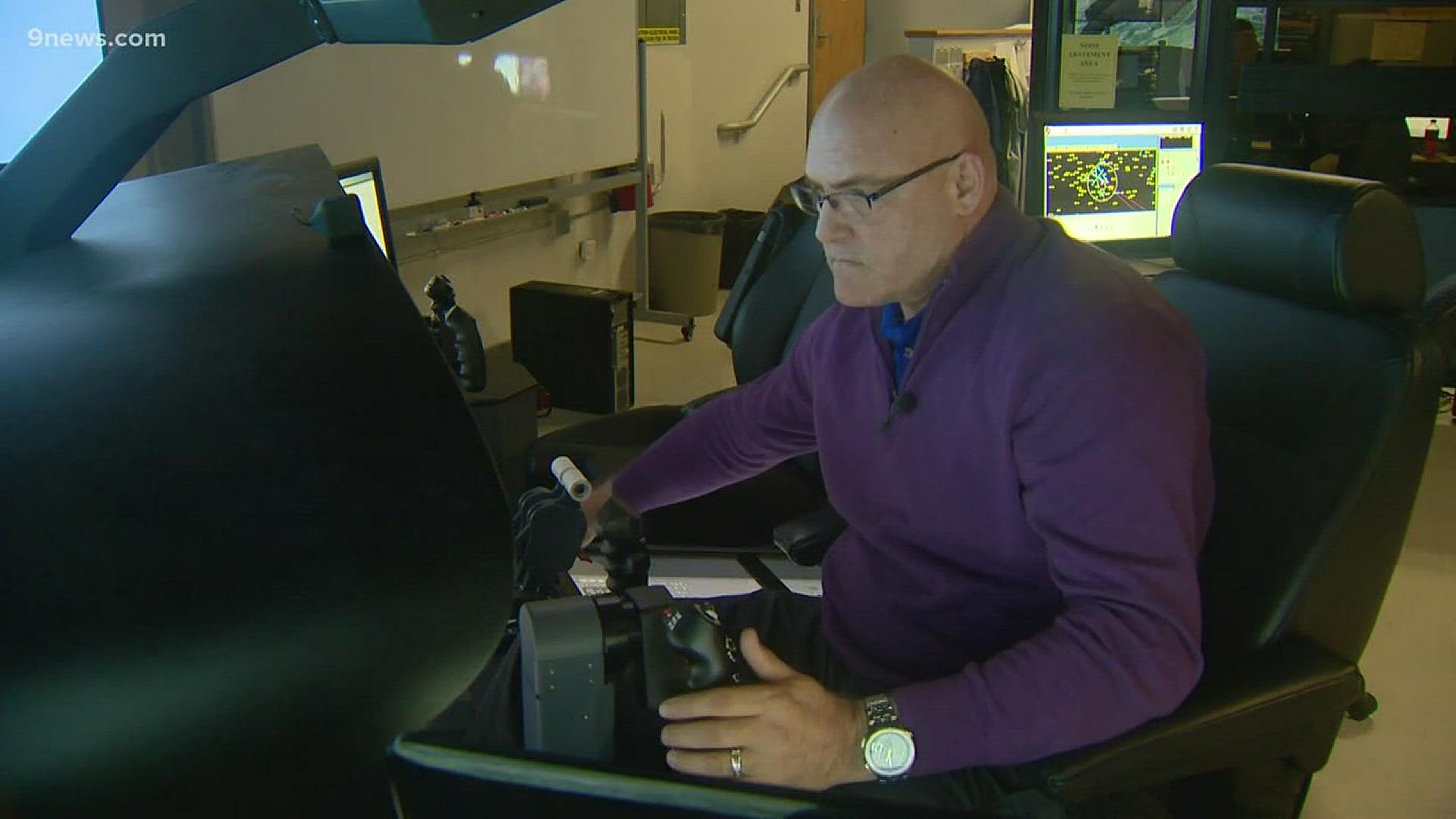DENVER — Max 8 aircrafts are equipped with an automatic safety feature that points the nose of the plane down to prevent a stall, something that is difficult for some pilots to control.
That's according to Kevin Kuhlmann, Metro State University of Denver’s associate chair of the Department of Aviation and Aerospace Science, who spoke with 9NEWS about piloting following President Donald Trump's announcement last Wednesday to ground all Boeing 737 Max 8 planes.
The Max 8's safety was called into question following the crash of an Ethiopian Airlines jet last Sunday that killed 157 people. That's in addition to an Oct. 29 crash of a Max 8 off the coast of Indonesia that killed all 189 people on board.
Kuhlmann, who has been a pilot for 40 years, said Max 8's jackscrew points the nose down to prevent a stall, making it difficult for some pilots to control the plane's vertical speed. A stalling of an aircraft is when the wing lifts up high enough to cause turbulence and eventually a destabilization.
“With an over-dependence on automation, that’s when you can run into issues,” Kuhlmann said. “No matter how automated the aircraft is, you have to be a pilot and you have to fly that airplane.”


Kuhlmann said there is one major rule when it comes to flying planes.
“Aviate, navigate and communicate; do them in that order with the top priority —aviating,” Kuhlmann said.


Kuhlmann said almost all planes have the same capabilities "to disengage an auto pilot to override a pitch-down that you didn’t expect."


Kuhlmann said crews outside the U.S. don't necessarily receive the same training as crews in the U.S.
A U.S. pilot needs 1,500 hours of airtime to earn an Air Transport Pilot or (ATP) certificate for a smaller airline. By the time they are flying larger airlines, pilots have many hours of experience in similar aircraft.
“So you know what to expect, in general, you just have to learn the hand-eye coordination motion of where the switch is, the sequence of what you do and when you do it, either in an abnormal procedure or an emergency procedure,” Kuhlmann said.
“A pilot's got to be a pilot, and you’ve got to fly the airplane…it’s the number one rule,” he added.
SUGGESTED VIDEOS | Science is cool

